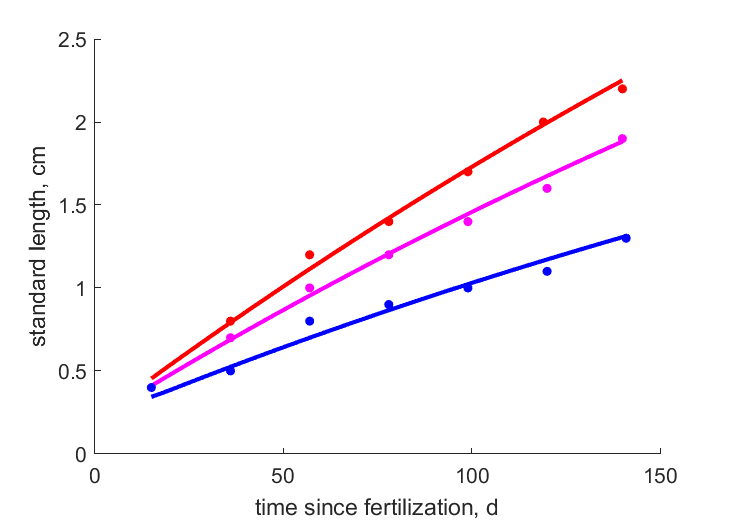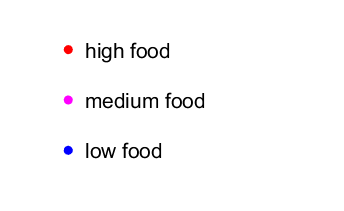Predictions & Data for this entry
| Model: abj | climate: BWh | migrate: | phylum: |
| COMPLETE = 2.8 | ecozone: THn | food: biCi, biB | class: |
| MRE = 0.038 | habitat: 0iFp | gender: D | order: |
| SMSE = 0.003 | embryo: Fpe | reprod: O | family: |
Zero-variate data
| Data | Observed | Predicted | (RE) | Unit | Description | Reference |
|---|---|---|---|---|---|---|
| ab | 10 | 9.493 | (0.05075) | d | age at birth | LemaNevi2006 |
| tp | 76.25 | 66.72 | (0.125) | d | age at puberty | fsw |
| am | 365 | 368.4 | (0.009341) | d | maximum life span | fsw |
| Li | 6.44 | 6.161 | (0.04329) | cm | ultimate standard length | fishbase |
| Wwb | 0.00052 | 0.0005061 | (0.0267) | g | wet weight at birth | guess |
| Wwi | 8 | 8.085 | (0.01063) | g | ultimate wet weight | fishbase |
| Ri | 2.192 | 2.182 | (0.00437) | #/d | maximum reprod rate | guess |
Uni- and bivariate data
| Data | Figure | Independent variable | Dependent variable | (RE) | Reference |
|---|---|---|---|---|---|
| tL_f1 |   | time since fertilization | standard length | (0.02619) | LemaNevi2006 |
| tL_f2 |   | time since fertilization | standard length | (0.0259) | LemaNevi2006 |
| tL_f3 |   | time since fertilization | standard length | (0.05373) | LemaNevi2006 |
Pseudo-data at Tref = 20°C
| Data | Generalised animal | Cyprinodon nevadensis | Unit | Description |
|---|---|---|---|---|
| v | 0.02 | 0.01181 | cm/d | energy conductance |
| p_M | 18 | 17.23 | J/d.cm^3 | vol-spec som maint |
| k_J | 0.002 | 0.002 | 1/d | maturity maint rate coefficient |
| k | 0.3 | 0.6063 | - | maintenance ratio |
| kap | 0.8 | 0.9414 | - | allocation fraction to soma |
| kap_G | 0.8 | 0.801 | - | growth efficiency |
| kap_R | 0.95 | 0.95 | - | reproduction efficiency |
Discussion
- Among the various C. nevadensis subspecies there are minor differences in generation times, with pupfish in habitats with widely fluctuating environmental conditions exhibiting shorter generation times
- The data are compiled for different subspecies, while subscpecies can vary considerably in traits
Facts
- weight length relationship: Ww in g = 0.01072 * (TL in cm)^3.22 (Ref: fishbase)
- TL = 1.212 * SL (Ref: fishbase)
- Pupfishes feed primarily on blue-green cyanobacteria. They feed seasonally on small invertebrates, mostly chironomid larvae, ostracods, and copepods (Ref: MoylYoshi1995)
Bibliography